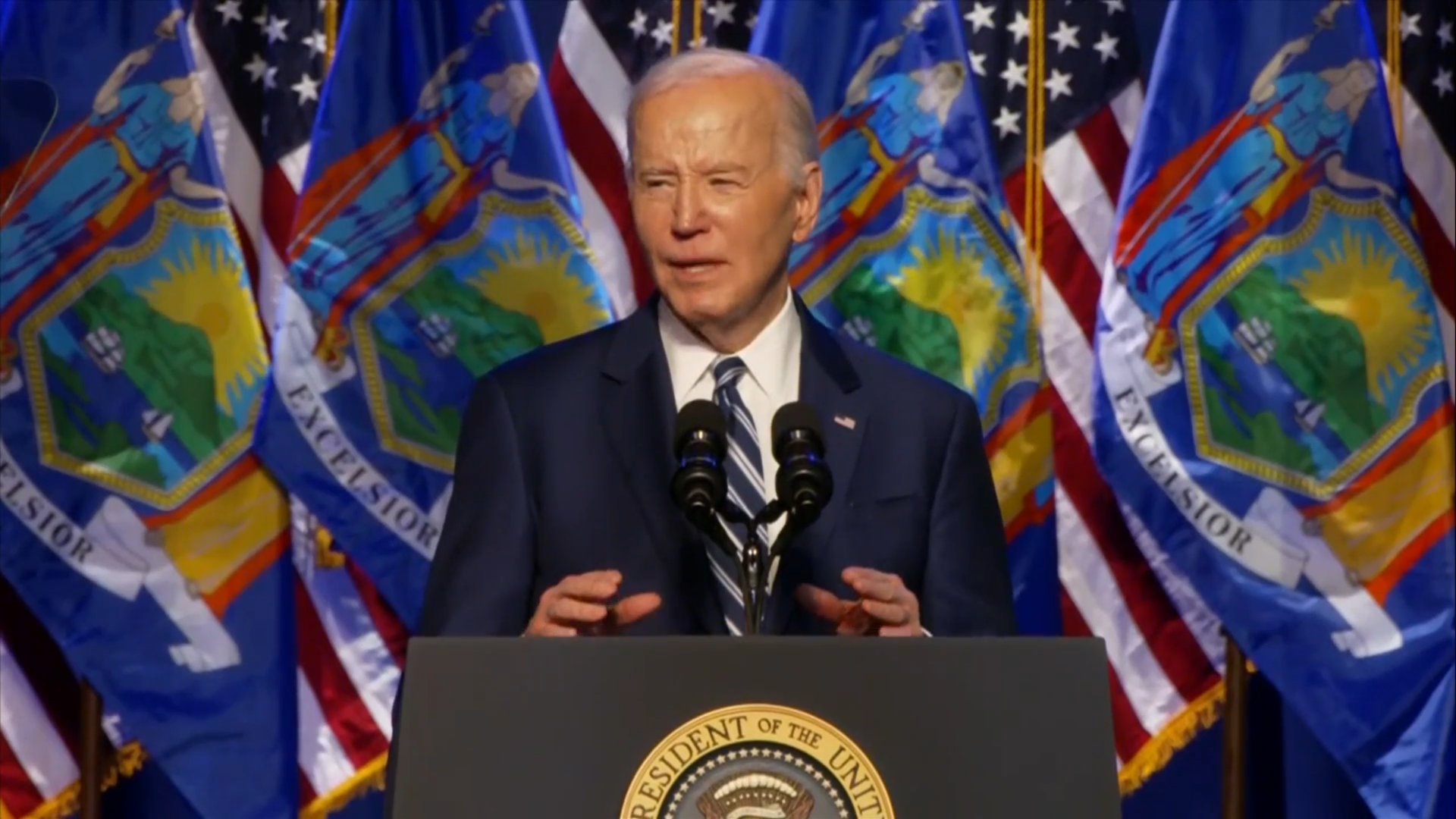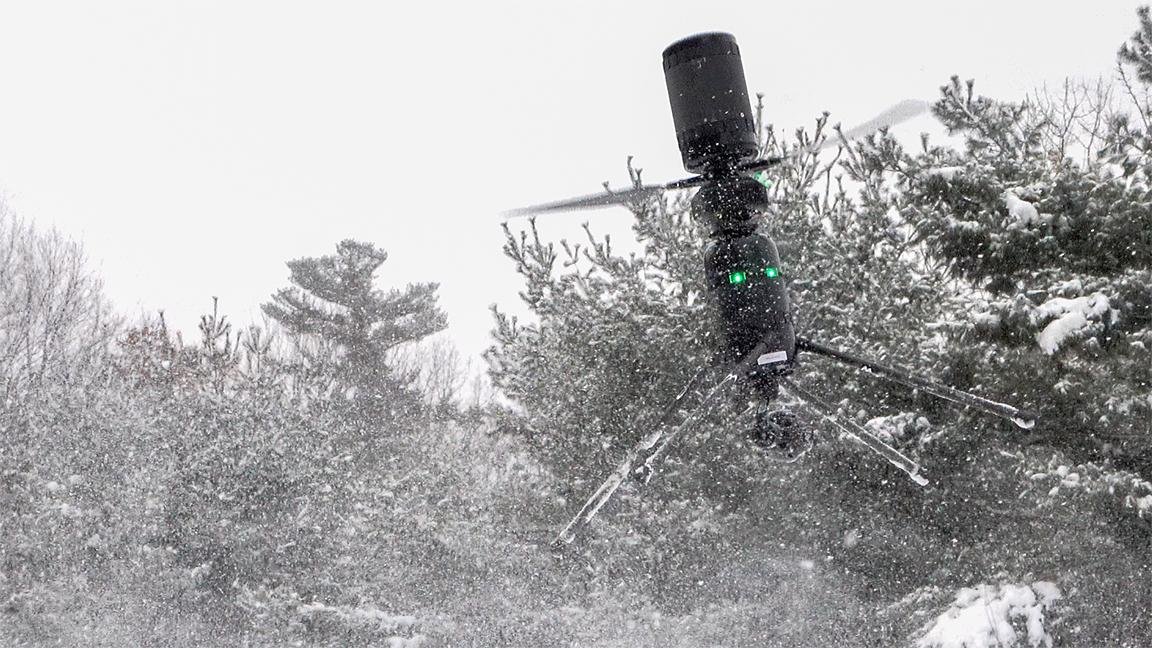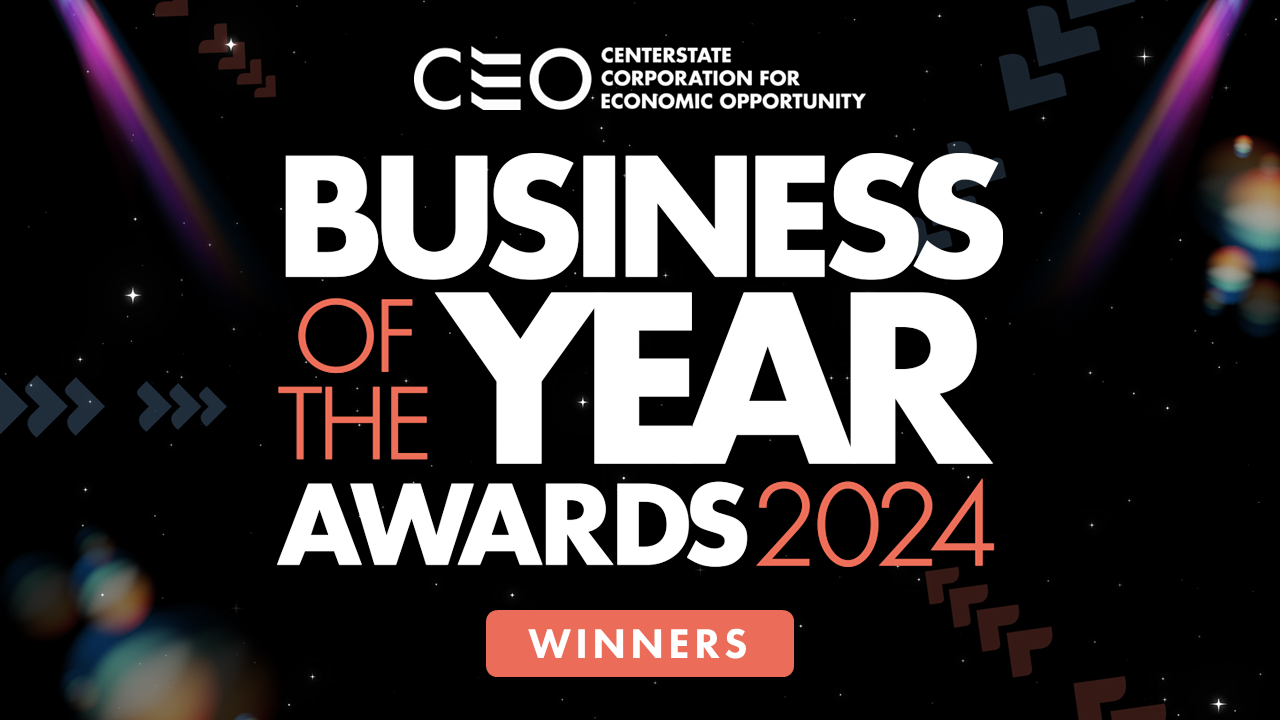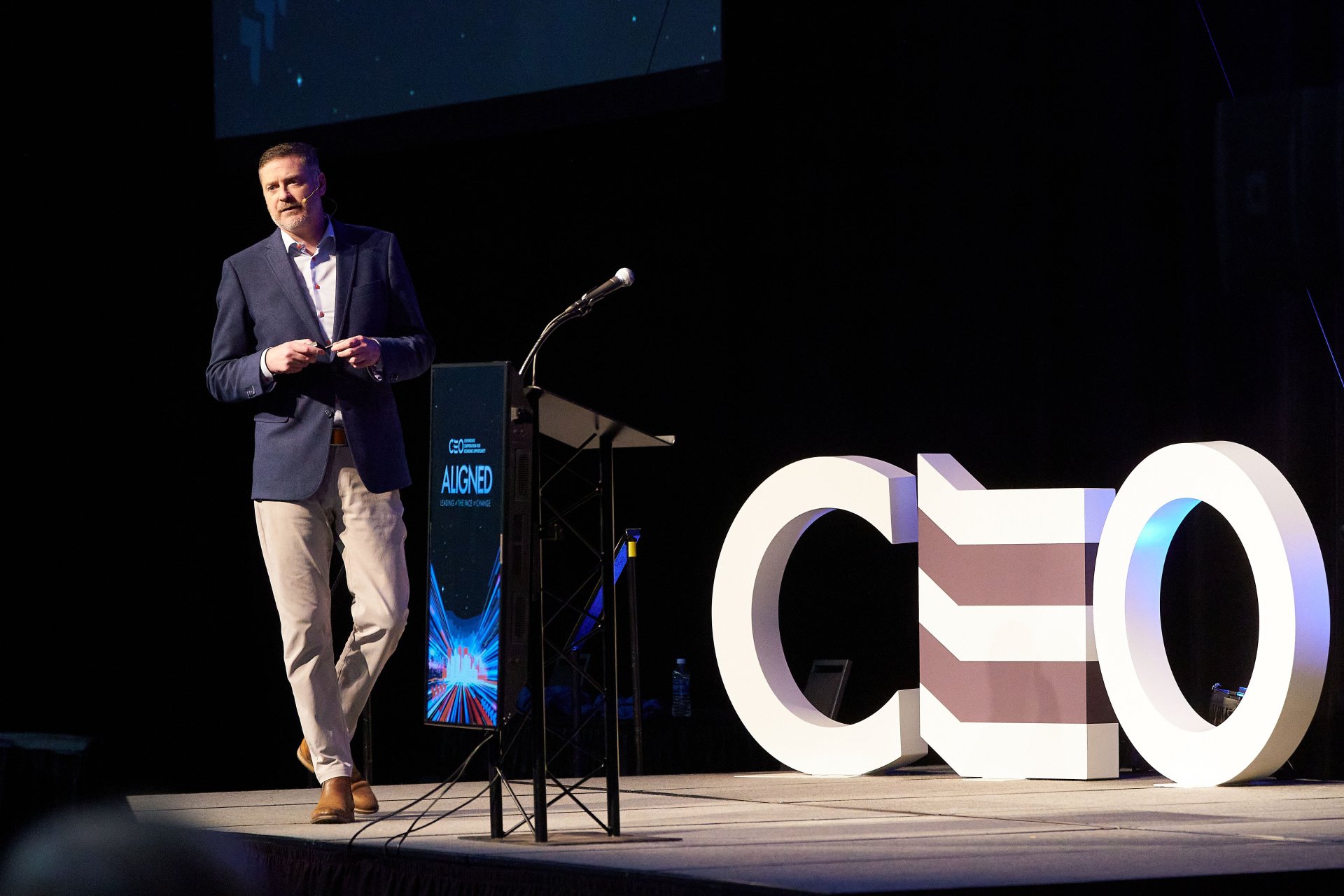CenterState CEO Annual Meeting Remarks by Robert M. SimpsonPosted on April 26, 2017 |
Image
|
Good afternoon, Syracuse!
I have a lot to say today, but I want to begin with a few important thank yous. To Jim Fox, the Chairman of our board, and to all of our members, for your partnership and unwavering support.
To my amazing wife, Corinne Ribble. Thank you for always reminding me what matters most in work and in life.
And to Kate Adams and Honeywell, for all you have done to engage with our community over the past decade and more to help return our Lake to its rightful place as a natural, economic and iconic asset for our entire region.
Be honest for a moment. How many of you could roll back the clock 15 years and envision a Lake restored – clean enough for regular regattas, safe enough to swim in, beautiful enough to serve as a backdrop for our new amphitheater?
It was impossible, they said. So deadly and dangerous for so long that ice-harvesting was banned in 1901. Swimming banned in 1940. The most polluted Lake in America. One of the top two or three most polluted Lakes in the world. A Lake lost to a tragic history of industrialization and urbanization.
And who could blame that cynicism? My grandfather, who worked at GE on Electronics Parkway in the 1950s, surely felt that way. He died nearly 15 years ago, never having known the Lake as anything other than something to stay away from and to keep his son, my father, out of. How many generations of Central New Yorkers have been imprinted by that very same stigma?
It’s amazing, really, when you think about it, how deeply impactful those actions, made in some cases more than 100 years ago, have been to our community’s growth and development.
Advocates like Sam Sage of the Atlantic States Legal Foundation and scientists like Steve Effler were among the first to draw our attention to the staggering environmental costs of our industrial legacy.
But what of the economic and social costs? Generations of children and families who could not swim in Onondaga Lake. Tourism and recreational industries that once thrived around the water, suddenly run ashore. Development patterns - that in almost every major city around the world embrace, amplify and celebrate their waterfronts -- that were stifled as the community turned their backs to the water.
Most pernicious, perhaps, is the deep-seeded, lasting psychological impact of a community forced to marginalize or ignore its most basic asset – the reason for this community’s very existence, the source of its life, the foundation for its history and the history of entire cultures, civilizations and our democratic form of government.
Imagine New York City without the Hudson River. New Orleans without the Mississippi. Amsterdam or Venice without its canals. Paris without the Seine. But yet that’s exactly how we came to define ourselves. Syracuse without Onondaga Lake. Our imagery. Our brand. The message that we projected to the world for too long was one of a City and region with its back to the Lake.
Play that out in your mind, for a moment, and think about all of the many ways that the marginalization of Onondaga Lake may have contributed to a pervasive pessimism about our present condition and, worse yet, our future.
For more than a century, we have been taught that our greatest asset is, in fact, a deficit. Changing that circumstance is impossible, they have said. It can’t be done. It won’t be done. Don’t even try. It’s a metaphor for so many of our community conversations.
Change on any scale, is hard. Change at the scale of the Onondaga Lake ecosystem – astoundingly difficult. There were obstacles. Bitter disagreements and difficult choices. There were a multitude of interests to navigate -. Concerned citizens. The court system. Onondaga County. The Onondaga Nation. Honeywell, and more.
It took vision, a long-term view of return on investment, the willingness to have difficult and painful conversations, and a steadfast commitment to reject the chorus of cynicism and the inertia of the status quo.
And while the work in and around the lake is certainly not finished, it has reached a point where the detractors can no longer say “it can’t be done.” What once seemed impossible, is now a dawning reality. What only a few dared to even dream, is within reach.
As we look through the lens of history, this project serves as reminder, and a model, for what can be achieved when we re-envision our deficits as assets. After decades of hoping, pushing and partnerships, we broke through.
That break-through moment is something that we all strive for. It is, I am sure, what motivates so many of you to do the work you do. And I know I speak for so many of us who work at CenterState CEO, that chasing the break through moments for our community is so much of what drives us.
Frankly, it is the example that the business community sets that gives us hope. It is your leadership, and your individual and collective commitment to breaking-through that proves, beyond a shadow of a doubt that big things, transformative things, are possible.
Take, for example, Ichor Therapeutics, a leading-edge biotechnology company in Lafayette, New York. Four years ago, Kelsey Moody, an Upstate Medical University student, started the company by filling his living room on Tipp Hill with used research equipment.
How many times do you think Kelsey was discouraged from chasing his vision. Don’t buy that microscope on e-bay. You’re too young to start a business. Others have tried to cure these diseases and failed, so you will too. You will never succeed as a biotechnology firm in Lafayette. Oh by the way, taxes in NY are way too high so if you must try, go somewhere else.
But Kelsey kept going. And found partners. And I am proud that we are one of them – making a $75,000 investment in his vision through our Grants for Growth program in 2015. And today, out of state of the art laboratories he has built himself, he has a growing workforce and is on the verge of human clinical trials for therapeutics to treat macular degeneration – a currently incurable eye condition that leads to partial loss of vision and affects as many as 15 million Americans.
Or take BioSpherix, in Parish, New York. In an old school building in Oswego County, the company makes machines that are being used around the world to create medical breakthroughs, advance research and develop new gene and cellular therapies.
Founder Randy Yerden grew up in Sandy Creek, went to school at Syracuse University, and eventually invented a machine that did something that had never been done before – it replicates the conditions inside human body to improve the growth of cultured stem cells. How often do you think he heard the words foolhardy, no, or impossible?
And yet just a few short years ago Randy stood in a hospital in Illinois as doctors removed a human trachea from one of his machines – a machine that grew stem-cells from a little girl’s own bone marrow into an organ that she was born without, an organ that her body was far less likely to reject because it was grown from her own cells. He watched for 9 hours as doctors sewed that trachea in place and gave this child the chance to swallow, taste, speak and live outside of the ICU.
These breakthroughs are all around us. In our work. In our lives. And we can learn important lessons from them.
As a parent, I get a front row seat for what a curious, ambitious human being is capable of every day. Ben turned five last week. The pace at which he learns new things is amazing.
Several months ago, my wife began to teach Ben chess. At first we played with just a few pieces. Pawns and the Queen. But within weeks, he had full command of the movements.
For several weeks, our games followed a predictable format. His Knights would jump out and hop all over the board. Pawns would advance. A full-frontal assault would be launched. It was chaotic and fast-paced and…just…fun.
Then one day, on our second game of the morning, Ben’s body language changed. Instead of laying sprawled out on the floor, he sat up, legs crossed, hunched over the board. His eyes focused. Not on his pieces, mind you, but on mine. His pace became deliberate. And as he inched a pawn within striking distance to my Queen he couldn’t contain a little giggle.
Now I know Ben, and like any parent I can tell intuitively when he is up to something nefarious. But it still took me a moment to figure it out that he was actually setting a trap. He had moved his pawn, the one he was baiting my Queen to take, on to a square that could be struck by his Knight. I was dumbfounded. In that moment, Ben was thinking ahead. He had a vision of taking my Queen and was forgoing the instant gratification of attacking somewhere else on the board for the sole purpose of achieving a bigger prize.
And he understood, even if only sub-consciously, that sometimes the things we view as deficits – in this case the loss of a pawn – are actually incredible assets that can be harnessed in pursuit of a greater good.
These are what breakthroughs are made of.
That vision and long-term view can be seen in our region’s audacious efforts to establish Central New York as a hub of technology and manufacturing development for the unmanned aerial systems industry. Here we are advancing the capabilities to enable this industry’s next breakthroughs, from improving disaster recovery efforts to delivering your Amazon packages. In the last six months alone we have brought one of the industry-leading conferences to Central New York, announced the development of a first in the world 50-mile test-bed corridor between Syracuse and Rome, and launched the world’s largest technology accelerator program for drones in the Syracuse Tech Garden – GENIUS NY. And we are just getting started.
The asset-based thinking is inherent in our community’s approach to combatting the scourge of poverty and neighborhood blight. Where programs like Up Start teach underserved entrepreneurs, particularly women and minorities, how to turn their personal talents in to successful businesses. Where Work Train engages with neighborhood-based partners to directly target job training for careers in health care and manufacturing to parts of our labor pool that have often been ignored. Or where the hidden buying-power of one of our most impoverished neighborhoods is identified, marketed and used to recruit a new grocery store to an existing food-desert.
These characteristics of breakthrough moments and ideas are powerful. And they are also what is missing from so much of the criticism of one of this community’s most hotly debated topics - modernizing local government.
For three years a group of highly respected civic volunteers from every sector of our community studied and analyzed our local government structures, conducted their work openly and transparently, and engaged directly with public and elected officials at every level, offering opportunity for input, criticism, and alternatives at every stage.
Now I don’t know about you, but I was certainly prepared for pushback when Consensus released its final report this year with a recommendation to create a new, metropolitan government to lead our community forward. Change on any scale, is hard, right? Change at the scale of Metropolitan Government? Astoundingly difficult.
But what I wasn’t prepared for was the immediate dismissiveness, blatant mistruths and unbridled antipathy in response to the Commission’s vision.
“It’s dead on arrival…” said one leader, almost instantaneously.
“It would abolish or dissolve the City,” we were warned. But a simple word search of the document finds only one mention of the word abolish, on page 48 that relates to Village courts. And one mention of the word dissolve, page 33, in relation to the Village of East Syracuse police department.
“It would doom Syracuse to eternal poverty,” we were told, despite the fact that our dubious distinction of having the highest concentration of poverty among African-Americans and Hispanics of any city in America is in part a product of the choices made inside our current system of governments.
“It didn’t address schools,” became a popular refrain. And that was a valid criticism. But in the nine weeks since Consensus recommended the creation of a second Commission for the sole purpose of performing a similar analysis on our school districts, only two of those critics have stepped forward to volunteer their time, expertise and creativity to volunteer on a schools commission.
“There won’t be any savings,” some have said, despite the fact that one single merger of one single service in one single Town – The Town of Clay police merger – has saved taxpayers more than $12 million over 7 years. In fact, Consensus estimates we could save up to $33 million a year, an amount equivalent to the entire City of Syracuse property tax levy. How many economic, social and community challenges could we re-imagine as assets with $330 million more dollars to spend over the next decade?
“No one wants this…” another said recently despite the fact that Consensus received more than 11,000 comments during one of the most extensive public engagement efforts our community has seen in recent years. Some were critical, to be sure. But thousands more were favorable and both public and private polling shows far more support for the idea than some would have you believe.
“500 elected and appointed officials in the County stand unified in opposition to this plan,” its been said. And I thank the opposition for making our point so eloquently.
And then there is this: “It was designed to ’strip the City of our assets.’”
After all, that happened before, didn’t it? We’ve had assets like our Lake stripped from us. So that fear is easy to resurface.
No. No. No.
You would think the tone and tenor of the discourse might get discouraging, but frankly I find it refreshing. Energizing. Because it means our passions have been aroused. Because it means we are trying to do something hard but necessary. And because it means that we are talking about issues that need to be confronted openly and transparently.
Like the fact that our current way of doing things has given us nearly 50 years of zero population growth. And we must do better.
Or that our current system allows legislative districts to be drawn by politicians in ways that do not represent their respective communities and perpetuate political - as opposed to policy - outcomes. And we must do better.
Or that our current system under-represents minorities in elected office at every level of local government. And we must do better.
Or that our City government is proposing to spend $18.5 million of its rainy day fund to fill a structural hole in the City’s budget that will leave our next mayor with less than two years of runway and no plan for the future. And we must do better.
Or that we cling to a system of micro-local governments that allows a village Mayor to be elected this year with 13 – yes, thirteen! – votes. And we must do better.
And yes, that our schools face massive fiscal and racial inequities and that our current system of land-use planning and zoning concentrates poverty and allows a select few in a suburban town to block a project that would have created jobs on the doorstep of those most in need. And we must do better.
The 19 members of the Consensus Commission have offered a vision that would make Syracuse the second largest City in New York State; do away with partisan districting; bring government representation closer to the people and build a future from a position of shared purpose and shared responsibility. And that vision is absolutely achievable.
There has been a lot of speculation that resistance to the idea of holding a referendum is so strong because those in power are afraid that it might actually succeed. That the voters - our citizens - might actually choose to reject the establishment that has perpetuated a tired, but politically effective “us” versus “them” narrative.
But I have a different theory. I actually wonder how many of those fighting the hardest against it are actually afraid it will fail at the ballot box. And then, in the absence of a vision for a modern, metropolitan approach to our future, that people will turn to their leaders and ask the obvious question: “If not this, then what?”
Because for all of the criticisms, how many constructive alternatives have been offered? How many different visions for our community have been put forward that look beyond the immediate gratification of today and think carefully about tomorrow?
Instead they tell you it’s impossible. That it can't be done. Won't be done. That it will not happen in our lifetime....
We’ve heard this all before, haven’t we? And yet take a step back and look at all we have accomplished together, even when it was hard.
Back in 1997, Chuckie Holstein and F.O.C.U.S. Greater Syracuse worked tirelessly to engage our community in a robust civic discourse that resulted in an articulation of 87 priorities needed to create economic opportunity and transform the regional economy.
Through her tireless efforts, and the efforts of the community members she empowered, the fruits of that labor of love and civic engagement process have come best in to “focus” through a twenty year lens.
Hundreds of citizens championed the idea of community scholarships for our high school students. And today we have a fully-funded Say Yes to Education program that will provide free tuition for every future graduate of the Syracuse City School System who gets accepted to college.
Others asked for the Landmark Theatre to get a second chance at life. And not only is the Landmark now hosting month long-travelling productions like the Lion King, but we didn’t stop there. We gave them a restored Hotel Syracuse too despite the chorus of skeptics who wanted to see that decrepit eyesore torn down.
A hospital for Children, they said, would be a good idea. And our community came together and did something magical.
They asked us to do more to preserve historic buildings so we literally changed State Law and gave New York the most aggressive Historic Preservation Tax Credit in the country – a tax credit that has paid great dividends for our community.
They pleaded with us to put the appropriate attention in to make downtown economically vibrant and livable. And no one can argue with the success we have had, with Downtown and the Lakefront now the fastest growing census tract in Central New York and a downtown residential occupancy rate holding strong at 99%.
They encouraged our government leaders to modernize city and county government; improve customer service in Government offices; increase citizen involvement in Government; create new sources of Government income besides taxes; merge city, county and village, police departments, and more. And we have not forgotten nor will we stop.
And Chuckie Holstein and those who brought their ideas forward as concerned citizens dared, back in 1997, to envision a day when Onondaga Lake was restored to its place as a community asset. And here we are with that dream within reach.
Through the long lens of history, the story of Onondaga Lake will be one of triumph. Not a story absent its share of tragedy, mind you. But one of a vision that transcended time and politics. Where the voices of a small few – pioneers and scientists like Sam Sage and Steve Effler – became the voices of many. Became a movement. Where science and data and facts eventually broke through resistance and ideology. Where a community persisted despite great odds.
None of these things happened without disagreement. Nor did any one person or organization achieve them alone. In moment after moment, the chasm between our vision and success might have seemed deep. But in the end the voice of the people prevailed. Those who shared a vision. Who were willing to look upon our deficits not as faults, but as assets waiting to be uncovered or rediscovered. And who resisted the urge to feed our need for immediate gratification in pursuit of a bigger prize.
In this moment of self-reflection, its time to remind ourselves who we are and what we are capable of. Time to reorient the very way we look at ourselves. Not as a community hiding from it’s past, but as a City and region with hope for the future. As a true metropolitan region, anchored not by its institutions, but by the same things that anchor the strongest and most iconic cities of the world. Its history. Its culture. It’s people. Its natural assets. Which do not belong to any one of us. Nor to our City, our County, our towns or our villages. They belong to us all.
To those who say we can’t, I say simply: we have. We must. And we will
Photo Credit: Wainwright Photography
Other
CEO News









